
|
It brightened up to 4.7 mag in early May (May 2, Marco Goiato). However, the brightness evolution has stopped after that. Now it is 6.3 mag (May 18, Carlos Labordena). It will approach to Sun down to 0.43 a.u. on May 27, and it was expected to brighten up to 3.5 mag. But actually it will be fading after this. In the Northern Hemisphere, it locates extremely low until early June. In the Southern Hemisphere, it is not observable after this until August.
Date(TT) R.A. (2000) Decl. Delta r Elong. m1 Best Time(A, h)
May 23 3 39.98 44 2.4 0.748 0.446 23 6.4 3:10 (216, 3)
May 30 4 51.71 46 11.6 1.005 0.435 24 7.1 20:50 (146, 4)
|
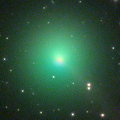
|
Now it is very bright as 7.4 mag (May 19, Marco Goiato). Brightening very rapidly. It will approach to Sun down to 0.9 a.u. in June, and it is extected to brighten up to 5.5 mag. In the Southern Hemisphere, it stays observable in good condition for a long time after this. In the Northern Hemisphere, it is not observable until late June.
Date(TT) R.A. (2000) Decl. Delta r Elong. m1 Best Time(A, h)
May 23 6 23.12 -20 53.0 1.214 1.031 54 7.2 20:44 ( 76,-17)
May 30 6 54.87 -19 48.1 1.107 0.980 54 6.5 20:50 ( 77,-16)
|

|
Now it is 8.3 mag (May 23, Charles S. Morris). It stays bright as 8-9 mag until July. It is observable in good condition in the Northern Hemisphere. In the Southern Hemisphere, it is not observable until late June.
Date(TT) R.A. (2000) Decl. Delta r Elong. m1 Best Time(A, h)
May 23 9 59.33 70 29.6 1.661 1.633 70 8.1 20:44 (160, 48)
May 30 10 43.34 66 13.1 1.659 1.650 71 8.2 20:50 (155, 52)
|

|
Now it is very bright as 9.1 mag (May 19, Marco Goiato). It will approach to Sun down to 0.3 a.u. on July 3, and it is expected to brighten up to 2.5 mag. In the Southern Hemisphere, it stays observable in good condition until early June when it brightens up to 8 mag. But it will not be observable around the perihelion passage. In the Northern Hemisphere, it is not observable now. It will appear in the evening sky at 3-4 mag in mid July, then it stays observable while getting fainter.
Date(TT) R.A. (2000) Decl. Delta r Elong. m1 Best Time(A, h)
May 23 6 4.98 -7 58.3 1.623 1.102 41 9.0 20:44 ( 90,-13)
May 30 6 3.95 -3 15.6 1.611 0.961 34 8.4 20:50 ( 99,-18)
|

|
Fragment of C/1844 Y1 (Great Comet). It brightened up to 7.0 mag in late March ((Mar. 30, Charles S. Morris). But the nucleus was split into some fragments, and it is fading after that. Now it is 9.1 mag (May 17, Sandor Szabo). It approaches to Sun down to 0.25 a.u. on May 31. It was expected to brighten up to -1 mag. But actually it is too faint to observe. In the Northern Hemisphere, it is not observable after this. In the Southern Hemisphere, it appears in the morning sky in late June, but it locates extremely low.
Date(TT) R.A. (2000) Decl. Delta r Elong. m1 Best Time(A, h)
May 23 3 48.92 38 44.7 0.781 0.366 18 9.8 3:10 (217, -2)
May 30 3 37.02 22 24.9 0.845 0.255 11 10.1 3:04 (233, -9)
|

|
Recovered from SWAN images after 24-year blank. Now it is very bright as 10.4 mag (Apr. 28, Chris Wyatt). It stays 10-11 mag until August. In the Southern Hemisphere, it stays observable in the morning sky for a long time. In the Northern Hemisphere, it is too low to observe until July.
Date(TT) R.A. (2000) Decl. Delta r Elong. m1 Best Time(A, h)
May 23 1 29.56 6 34.8 2.010 1.379 38 10.0 3:10 (262, 0)
May 30 1 53.20 7 57.1 1.995 1.378 39 10.0 3:04 (261, 1)
|
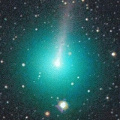
|
Now it is very bright as 9.6 mag (May 18, Carlos Labordena). It continued brightening for a while even after the perihelion passage on Mar. 15. It will be fading after this. It stays observable for a long time in the Northern Hemisphere. In the Southern Hemisphere, it is not observable until early June. It seems to be a fragment of C/1988 A1 (Liller), like C/1996 Q1 (Tabur) and C/2015 F3 (SWAN).
Date(TT) R.A. (2000) Decl. Delta r Elong. m1 Best Time(A, h)
May 23 11 9.23 59 2.3 1.233 1.467 80 10.0 20:44 (153, 62)
May 30 11 26.33 50 25.9 1.332 1.559 82 10.6 20:50 (134, 64)
|
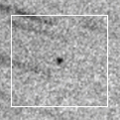
|
It will approach to Sun down to 0.34 a.u. and brighten up to 7 mag in June. In the Southern Hemisphere, it will appear in the evening sky at 7 mag in early July. Then it stays observable in good condition while the comet will be fading. In the Northern Hemisphere, it is not observable until mid August when the comet will fade down to 12 mag.
Date(TT) R.A. (2000) Decl. Delta r Elong. m1 Best Time(A, h)
May 23 3 35.71 24 44.8 1.853 0.856 6 11.2 3:10 (229,-11)
May 30 4 10.55 26 4.3 1.732 0.731 5 10.5 3:04 (226,-12)
|
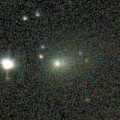
|
Now it is 12.7 mag (May 13, Martin Masek). Brightening very rapidly. It will brighten up to 8-9 mag from summer to autumn. It will be observable in excellent condition in the Southern Hemisphere. It locates very low around the high light in the Northern Hemisphere.
Date(TT) R.A. (2000) Decl. Delta r Elong. m1 Best Time(A, h)
May 23 12 40.62 -1 18.5 1.093 1.890 127 12.4 20:44 ( 4, 54)
May 30 12 39.05 -1 37.7 1.108 1.845 120 12.1 20:50 ( 18, 52)
|
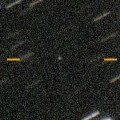
|
Now it is 18.6 mag (May 16, Charles S. Morris). It will brighten rapidly, and it is expected to brighten up to 9.5 mag in June. But actually, it has not started brightening rapidly yet. It is not observable in June. However, it stays observable in good condition until May while the comet is brightening, and after July while the comet will be fading.
Date(TT) R.A. (2000) Decl. Delta r Elong. m1 Best Time(A, h)
May 23 8 24.34 12 19.6 0.467 0.907 63 13.2 20:44 ( 87, 26)
May 30 7 59.55 16 27.3 0.445 0.803 49 12.2 20:50 ( 99, 16)
|
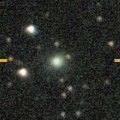
|
Now it is 14.3 mag (Apr. 22, Sandor Szabo). It will brighten up to 10.5 mag from 2020 December to 2021 January. In the Northern Hemisphere, it stays observable in good condition while the comet will be brightening gradually, but it is not observable at the high light. In the Southern Hemisphere, it is not observable for a long time, but it will be observable in good condition after the high light.
Date(TT) R.A. (2000) Decl. Delta r Elong. m1 Best Time(A, h)
May 23 12 54.50 75 34.3 2.942 2.934 79 13.5 20:46 (180, 50)
May 30 12 29.45 72 39.6 2.911 2.870 77 13.4 20:50 (173, 52)
|

|
Now it is 13.3 mag (Apr. 20, Sandor Szabo). It stays bright as 13 mag until June. In the Southern Hemisphere, it will never be observable again.
Date(TT) R.A. (2000) Decl. Delta r Elong. m1 Best Time(A, h)
May 23 1 39.49 68 44.6 4.160 3.638 52 13.8 3:10 (205, 30)
May 30 1 52.94 71 0.4 4.172 3.671 54 13.9 3:04 (202, 31)
|

|
It will appear in the morning sky soon.
Date(TT) R.A. (2000) Decl. Delta r Elong. m1 Best Time(A, h)
May 23 2 5.17 21 11.2 6.690 5.803 26 13.9 3:10 (245, 2)
May 30 2 10.47 21 42.8 6.640 5.805 31 13.8 3:04 (247, 5)
|

|
Now it is 14.6 mag (May 17, Chris Wyatt). It stays 13-14 mag from 2020 to 2021. It stays observable in good condition for a while.
Date(TT) R.A. (2000) Decl. Delta r Elong. m1 Best Time(A, h)
May 23 12 30.53 15 43.0 2.618 3.208 117 14.2 20:44 ( 13, 70)
May 30 12 30.32 14 55.7 2.685 3.193 111 14.2 20:50 ( 34, 66)
|

|
Bright new comet. Now it is 13.2 mag (Apr. 28, Alan Hale). It will fade out rapidly after this, and it will be fainter than 18 mag in late June. It stays observable in good condition in the Northern Hemisphere. It will be unobservable after this in the Southern Hemisphere.
Date(TT) R.A. (2000) Decl. Delta r Elong. m1 Best Time(A, h)
May 23 5 42.89 79 51.8 0.878 0.958 60 14.5 20:44 (168, 32)
May 30 8 9.72 72 6.8 1.067 1.026 59 15.2 20:50 (157, 37)
|
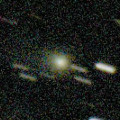
|
It brightened up to 10.8 mag (Apr. 20, Sandor Szabo). Now it is 13.6 mag (May 17, Chris Wyatt). It will fade out rapidly, and will be fainter than 18 mag in June.
Date(TT) R.A. (2000) Decl. Delta r Elong. m1 Best Time(A, h)
May 23 8 7.60 29 24.3 1.153 1.028 56 14.8 20:44 (105, 32)
May 30 8 52.27 27 21.3 1.226 1.129 59 15.6 20:50 (102, 33)
|
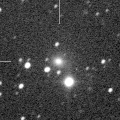
|
Now it is bright as 13.9 mag (Apr. 24, Chris Wyatt). It stays 15 mag until summer. It stays observable for a long time in the Southern Hemisphere. It is not observable until August in the Northern Hemisphere.
Date(TT) R.A. (2000) Decl. Delta r Elong. m1 Best Time(A, h)
May 23 2 55.28 -37 49.5 4.180 3.782 60 14.9 3:10 (293,-39)
May 30 3 0.68 -36 60.0 4.174 3.809 62 15.0 3:04 (294,-36)
|
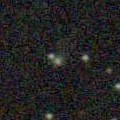
|
Now it is 15.2 mag (May 20, R. Carstens). It will brighten up to 13 mag in 2021. In 2020, it is observable at 15 mag in good condition from spring to summer.
Date(TT) R.A. (2000) Decl. Delta r Elong. m1 Best Time(A, h)
May 23 14 13.45 -20 55.8 4.067 5.004 155 15.0 22:07 ( 0, 34)
May 30 14 8.41 -21 12.4 4.078 4.963 147 15.0 21:35 ( 0, 34)
|
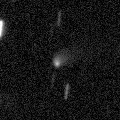
|
Now it is 15.4 mag (Apr. 22, Chris Wyatt). It stays 14-15 mag until 2021. In the Southern Hemisphere, it stays observable in good condition for a long time. In the Northern Hemisphere, it is not observable until June in 2021.
Date(TT) R.A. (2000) Decl. Delta r Elong. m1 Best Time(A, h)
May 23 16 20.02 -84 21.4 4.463 4.993 116 15.2 0:23 ( 0,-29)
May 30 15 53.30 -84 34.5 4.421 4.965 117 15.2 23:21 ( 0,-30)
|

|
Now it is 15.6 mag (May 14, D. Buczynski). It is expected to be observable at 5-6 mag for a long time from 2022 to 2023. In the Northern Hemisphere, it is not observable at the high light from 2022 summer to 2023 summer. In the Southern Hemisphere, it is only visible in the extremely low sky in summer in 2020. But it will be observable in good condition at the high light.
Date(TT) R.A. (2000) Decl. Delta r Elong. m1 Best Time(A, h)
May 23 18 0.68 53 8.5 8.847 9.108 101 15.3 1:58 (180, 72)
May 30 17 56.09 53 19.6 8.783 9.058 102 15.3 1:26 (180, 72)
|

|
Now it is 15.2 mag (May 13, Hiroshi Abe). It stays 15-16 mag for a long time until 2021.
Date(TT) R.A. (2000) Decl. Delta r Elong. m1 Best Time(A, h)
May 23 20 43.47 7 54.9 4.113 4.480 104 15.6 3:10 (317, 56)
May 30 20 38.52 9 26.6 4.010 4.477 111 15.5 3:04 (326, 61)
|
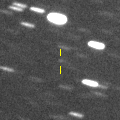
|
Now it is 17.0 mag (May 14, Hirohisa Sato). It will brighten up to 15.5 mag from June to August, and it will be observable in good condition.
Date(TT) R.A. (2000) Decl. Delta r Elong. m1 Best Time(A, h)
May 23 19 21.41 -3 25.2 1.359 2.138 128 16.1 3:10 (356, 52)
May 30 19 24.03 -2 36.0 1.295 2.122 133 16.0 2:54 ( 0, 52)
|

|
New comet. Now it is 16.0 mag (May 14, iTelescope Observatory, Siding Spring). It will brighten up to 13.5 mag in spring in 2021. In the Southern Hemisphere, it stays observable in good condition for a long time. In the Northern Hemisphere, it is not observable until spring in 2021.
Date(TT) R.A. (2000) Decl. Delta r Elong. m1 Best Time(A, h)
May 23 22 40.32 -52 11.9 4.224 4.514 100 16.2 3:10 (331, -8)
May 30 22 36.29 -53 45.7 4.083 4.474 106 16.1 3:04 (335, -7)
|

|
Now it is 16.4 mag (May 21, ATLAS-MLO, Mauna Loa). It will brighten up to 12 mag in winter in 2022. In the Northern Hemisphere, it stays observable in good condition for a long time. In the Southern Hemisphere, it is not observable until 2021 November.
Date(TT) R.A. (2000) Decl. Delta r Elong. m1 Best Time(A, h)
May 23 0 15.77 50 2.2 6.785 6.225 52 16.3 3:10 (229, 35)
May 30 0 21.47 51 1.0 6.696 6.180 55 16.2 3:04 (229, 37)
|
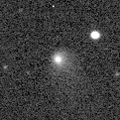
|
It brightened up to 13.8 mag in autumn in 2019 (Sept. 3, Chris Wyatt). Now it is fading slowly. Now it is 15.9 mag (May 13, iTelescope Observatory, Siding Spring). In 2020, it stays observable in good condition while the comet will be fading from 16 to 17 mag.
Date(TT) R.A. (2000) Decl. Delta r Elong. m1 Best Time(A, h)
May 23 0 31.29 -3 54.8 6.084 5.592 56 16.3 3:10 (279, 6)
May 30 0 33.84 -3 15.3 6.028 5.631 62 16.3 3:04 (281, 11)
|

|
Now it is 16.7 mag (May 20, ATLAS-MLO, Mauna Loa). It will stay at 15 mag for a long time from 2021 to 2022. In the Northern Hemisphere, it stays observable in good condition while brightening gradually. In the Southern Hemisphere, it stays locating low for a long time.
Date(TT) R.A. (2000) Decl. Delta r Elong. m1 Best Time(A, h)
May 23 18 54.39 34 20.6 5.948 6.384 111 16.4 2:52 ( 0, 89)
May 30 18 48.75 34 24.8 5.863 6.353 114 16.4 2:18 ( 0, 89)
|

|
It brightened up to 13.2 mag from spring to autumn in 2019 (June 30, Thomas Lehmann). Now it is fading slowly. It has already faded down to 16.0 mag (Apr. 25, iTelescope Observatory, Siding Spring). In the Southern Hemisphere, it stays observable for a long time. In the Northern Hemisphere, it is not observasble until June.
Date(TT) R.A. (2000) Decl. Delta r Elong. m1 Best Time(A, h)
May 23 0 10.02 -30 57.3 4.173 4.039 75 16.4 3:10 (304, -6)
May 30 0 11.29 -30 38.1 4.113 4.077 80 16.4 3:04 (306, -2)
|

|
Now it is 15.7 mag (May 18, ATLAS-MLO, Mauna Loa). It is observable at 16 mag in 2020. It is observable in excellent condition in the Southern Hemisphere. It locates somewhat low in the Northern Hemisphere.
Date(TT) R.A. (2000) Decl. Delta r Elong. m1 Best Time(A, h)
May 23 19 46.74 -29 48.4 5.968 6.644 128 16.6 3:10 (352, 25)
May 30 19 40.68 -29 47.5 5.887 6.657 136 16.5 3:04 (358, 25)
|
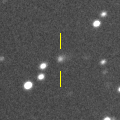
|
Now it is 16.9 mag (May 18, ATLAS-MLO, Mauna Loa). It stays observable at 16-17 mag from 2020 to 2021. It locates somewhat low in the Northern Hemisphere.
Date(TT) R.A. (2000) Decl. Delta r Elong. m1 Best Time(A, h)
May 23 10 44.89 -17 15.2 6.228 6.582 106 16.7 20:44 ( 35, 30)
May 30 10 47.03 -16 44.8 6.325 6.583 100 16.7 20:50 ( 42, 26)
|

|
Now it is 17.3 mag (May 18, W. Hasubick). It will be observable at 16.5-17 mag from spring in 2020 to summer in 2021.
Date(TT) R.A. (2000) Decl. Delta r Elong. m1 Best Time(A, h)
May 23 19 33.29 24 3.7 4.352 4.816 111 16.9 3:10 (336, 78)
May 30 19 25.30 24 8.6 4.254 4.801 117 16.8 2:55 ( 0, 79)
|

|
It brightened up to 7.7 mag in June in 2018 (June 19, Juan Jose Gonzalez). Now it is fading. It has already faded down to 16.9 mag (Apr. 22, J. Drummond). In the Southern Hemisphere, it stays observable for a long time until the comet will fade out, although it becomes extremely low in June. In the Northern Hemisphere, it is not observable until late August.
Date(TT) R.A. (2000) Decl. Delta r Elong. m1 Best Time(A, h)
May 23 5 53.69 -12 8.6 7.447 6.743 43 16.8 20:44 ( 88,-18)
May 30 5 57.20 -11 40.2 7.543 6.797 39 16.9 20:50 ( 93,-24)
|

|
Now it is 17.0 mag (May 15, ATLAS-MLO, Mauna Loa). It will fade out after this, and will be fainter than 18 mag in July.
Date(TT) R.A. (2000) Decl. Delta r Elong. m1 Best Time(A, h)
May 23 12 38.29 -1 52.4 1.327 2.102 127 17.0 20:44 ( 4, 53)
May 30 12 41.89 -2 11.0 1.388 2.105 121 17.1 20:50 ( 17, 51)
|

|
It brightened up to 12-13 mag from 2018 to 2019. Now it is fading. It has already faded down to 16.9 mag (May 10, P. Camilleri, J. Oey). In the Southern Hemisphere, it stays observable in good condition for a long time. It will never be observable after this in the Northern Hemisphere.
Date(TT) R.A. (2000) Decl. Delta r Elong. m1 Best Time(A, h)
May 23 9 13.92 -64 43.6 5.158 5.488 103 17.0 20:44 ( 21,-18)
May 30 9 13.31 -63 19.5 5.244 5.535 101 17.0 20:50 ( 25,-20)
|

|
Now it is 17.4 mag (May 9, P. Camilleri, H. Williams, J. Oey). It is expected to brighten up to 13 mag in 2022. In 2020, it is observable in excellent condition in the Southern Hemisphere. In the Northern Hemisphere, it is not observable. It will be observable from autumn to winter, but it locating extremely low.
Date(TT) R.A. (2000) Decl. Delta r Elong. m1 Best Time(A, h)
May 23 6 37.21 -26 16.8 7.683 7.237 60 17.0 20:44 ( 69,-17)
May 30 6 41.93 -25 58.5 7.687 7.197 57 17.0 20:50 ( 73,-23)
|
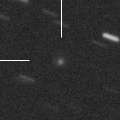
|
Now it is 16.5 mag (May 14, R. Ligustri). It will fade out after this, and will be fainter than 18 mag in July.
Date(TT) R.A. (2000) Decl. Delta r Elong. m1 Best Time(A, h)
May 23 15 19.43 3 29.4 2.643 3.580 153 17.1 23:13 ( 0, 58)
May 30 15 13.76 2 46.1 2.706 3.616 149 17.2 22:40 ( 0, 58)
|
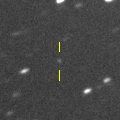
|
Now it is 18.0 mag (May 13, Mt. Lemmon Survey). It stays observable at 16-17 mag for a long time until 2024.
Date(TT) R.A. (2000) Decl. Delta r Elong. m1 Best Time(A, h)
May 23 15 57.09 -17 19.1 8.890 9.901 176 17.2 23:51 ( 0, 38)
May 30 15 52.74 -17 0.4 8.882 9.883 170 17.2 23:19 ( 0, 38)
|

|
Now it is 16.9 mag (May 10, Purple Mountain Observatory, XuYi Station). It will be fading after this, and it will be fainter than 18 mag in late June.
Date(TT) R.A. (2000) Decl. Delta r Elong. m1 Best Time(A, h)
May 23 13 0.24 -0 22.6 1.470 2.274 131 17.2 20:55 ( 0, 54)
May 30 13 1.75 -1 0.3 1.547 2.291 125 17.3 20:50 ( 9, 53)
|

|
Now it is 17.1 mag (May 19, ATLAS-MLO, Mauna Loa). It will brighten up to 16.5 mag and will be observable in good condition from June to October.
Date(TT) R.A. (2000) Decl. Delta r Elong. m1 Best Time(A, h)
May 23 20 25.12 7 44.0 1.764 2.302 108 17.4 3:10 (324, 58)
May 30 20 29.46 9 22.9 1.686 2.283 113 17.2 3:04 (331, 62)
|

|
Now it is 18.8 mag (May 13, iTelescope Observatory, Siding Spring). It brightens up to 13.5 mag in winter. But it is not observable at high light. In the Southern Hemisphere, it stays observable in good condition until autumn when the comet will brighten up to 14 mag. It stays locating very low in the Northern Hemisphere.
Date(TT) R.A. (2000) Decl. Delta r Elong. m1 Best Time(A, h)
May 23 18 59.96 -46 7.8 2.049 2.859 135 17.5 2:58 ( 0, 9)
May 30 18 56.83 -46 33.2 1.968 2.830 141 17.3 2:27 ( 0, 8)
|
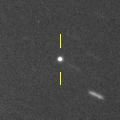
|
It brightened up to 15.9 mag in February and March (Feb. 18, Toshihiko Ikemura, Hirohisa Sato). Now it is fading. It has already faded down to 17.7 mag (May 15, A. Diepvens). It will be fainter than 18 mag in late June.
Date(TT) R.A. (2000) Decl. Delta r Elong. m1 Best Time(A, h)
May 23 10 21.41 -4 0.1 1.214 1.666 96 17.3 20:44 ( 49, 38)
May 30 10 29.94 -6 54.8 1.285 1.677 92 17.5 20:50 ( 53, 31)
|

|
New comet Now it is 17.0 mag (May 23, Katsumi Yoshimoto). It brightens up to 17 mag from June to July. It is observable in excellent condition in the Northern Hemisphere. In the Southern Hemisphere, it is observable only in the extremely low sky until early June and after August.
Date(TT) R.A. (2000) Decl. Delta r Elong. m1 Best Time(A, h)
May 23 0 11.67 36 5.5 2.000 1.588 51 17.5 3:10 (245, 31)
May 30 0 4.10 40 21.1 1.863 1.583 58 17.3 3:04 (243, 38)
|
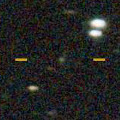
|
Now it is 17.6 mag (May 19, ATLAS-MLO, Mauna Loa). It became brighter than orignally predicted. It stays observable at 17 mag in good condition until autumn.
Date(TT) R.A. (2000) Decl. Delta r Elong. m1 Best Time(A, h)
May 23 12 38.25 -7 16.7 1.476 2.259 129 17.5 20:44 ( 4, 48)
May 30 12 38.82 -7 38.5 1.519 2.240 123 17.4 20:50 ( 16, 46)
|

|
Now it is 17.0 mag (May 18, ATLAS-MLO, Mauna Loa). It will brighten up to 15.5 mag in early 2021. In 2020, it stays observable at 17 mag until November in the Southern Hemisphere, or until July in the Northern Hemisphere.
Date(TT) R.A. (2000) Decl. Delta r Elong. m1 Best Time(A, h)
May 23 14 18.60 -32 34.8 2.512 3.453 154 17.4 22:12 ( 0, 22)
May 30 14 12.69 -32 6.4 2.495 3.399 148 17.4 21:39 ( 0, 23)
|

|
It will pass the perihelion in 2021, and it is predicted to be observable at 17-18 mag from 2020 to 2022. However, it has not been observed at all since 2015. It was not detected, fainter than 20.5 mag, in 2017 May (Werner Hasubick).
Date(TT) R.A. (2000) Decl. Delta r Elong. m1 Best Time(A, h)
May 23 20 40.99 -21 52.1 5.546 6.045 115 17.5 3:10 (336, 29)
May 30 20 41.27 -21 50.9 5.437 6.032 121 17.5 3:04 (342, 31)
|

|
Now it is 17.3 mag (Apr. 23, D. Buczynski). It will be observable at 16.5-17 mag from 2020 to 2021.
Date(TT) R.A. (2000) Decl. Delta r Elong. m1 Best Time(A, h)
May 23 1 56.68 67 35.9 6.861 6.271 50 17.5 3:10 (205, 28)
May 30 1 59.77 67 57.5 6.835 6.255 51 17.5 3:04 (205, 30)
|

|
Now it is 17.6 mag (May 21, ATLAS-MLO, Mauna Loa). It will be fading slowly after this. It is observable in good condition in the Northern Hemisphere. In the Southern Hemisphere, it is observable in the extremely low sky only in 2021 spring.
Date(TT) R.A. (2000) Decl. Delta r Elong. m1 Best Time(A, h)
May 23 12 39.99 52 42.8 8.710 8.854 94 17.5 20:44 (175, 72)
May 30 12 38.49 51 57.9 8.792 8.866 90 17.5 20:50 (158, 71)
|

|
Now it is 19.6 mag (May 3, Mt. Lemmon Survey). It will brighten very rapidly, and brighten up to 14.5 mag from August to September. In the Northern Hemisphere, it stays observable for a long time, although it becomes extremely low in early September. In the Southern Hemisphere, it is observable only until mid June.
Date(TT) R.A. (2000) Decl. Delta r Elong. m1 Best Time(A, h)
May 23 22 27.27 20 35.5 1.795 1.848 76 17.9 3:10 (276, 45)
May 30 22 33.61 26 14.1 1.638 1.761 79 17.5 3:04 (270, 51)
|
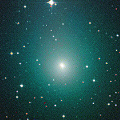
|
It brightened up to 8.3 mag in last September (Sept. 20, Maik Meyer). Now it is fading. It has already faded down to 17.1 mag (Apr. 5, iTelescope Observatory, Siding Spring). In the Southern Hemisphere, it stays observable for a long time after this. In the Northern Hemisphere, it will never be observable again.
Date(TT) R.A. (2000) Decl. Delta r Elong. m1 Best Time(A, h)
May 23 1 51.94 -66 23.7 3.441 3.591 90 17.6 3:10 (331,-35)
May 30 2 11.09 -68 25.9 3.454 3.660 93 17.7 3:04 (333,-35)
|
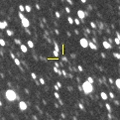
|
Now it is 18.4 mag (Apr. 22, W. Hasubick). It stays observable at 18 mag for a long time from 2019 to 2021.
Date(TT) R.A. (2000) Decl. Delta r Elong. m1 Best Time(A, h)
May 23 19 11.97 -17 42.9 6.942 7.688 134 17.7 3:09 ( 0, 37)
May 30 19 9.41 -18 14.9 6.865 7.690 142 17.6 2:39 ( 0, 37)
|
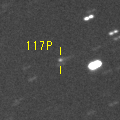
|
Now it is 17.7 mag (Apr. 14, Y. Sugiyama). It will brighten up to 13 mag in 2022. In 2020, it is observable at 17.5 mag in good condition in spring. It locates somewhat low in the Southern Hemisphere.
Date(TT) R.A. (2000) Decl. Delta r Elong. m1 Best Time(A, h)
May 23 10 13.51 20 11.2 4.335 4.383 86 17.7 20:44 ( 77, 53)
May 30 10 16.40 19 40.8 4.426 4.370 80 17.8 20:50 ( 82, 46)
|

|
Now it is 18.7 mag (Apr. 18, iTelescope Observatory, Siding Spring). It brightens up to 16 mag from summer to winter. In the Southern Hemisphere, it is observable in excellent condition. In the Northern Hemisphere, it is not observable until late October.
Date(TT) R.A. (2000) Decl. Delta r Elong. m1 Best Time(A, h)
May 23 21 33.83 -51 43.4 1.835 2.380 109 18.0 3:10 (339, -2)
May 30 21 45.08 -53 4.1 1.733 2.332 113 17.8 3:04 (341, -2)
|
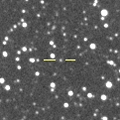
|
Now it is 17.2 mag (May 18, ATLAS-HKO, Haleakala). It is observable at 17-18 mag in good condition in 2020 summer.
Date(TT) R.A. (2000) Decl. Delta r Elong. m1 Best Time(A, h)
May 23 19 55.56 27 24.5 8.653 8.977 105 17.9 3:10 (307, 78)
May 30 19 53.10 28 11.0 8.576 8.969 109 17.9 3:04 (329, 82)
|

|
Now it is 17.0 mag (May 21, Charles S. Morris). It approached to Sun down to 0.5 a.u. in March, and it must have brightened up to 14 mag. It is fading very rapidly. But it may be somewhat brighter than this ephemeris.
Date(TT) R.A. (2000) Decl. Delta r Elong. m1 Best Time(A, h)
May 23 9 44.96 -5 21.5 0.933 1.358 88 18.2 20:44 ( 56, 31)
May 30 10 16.16 -6 3.7 1.055 1.456 89 18.7 20:50 ( 56, 30)
|
|
![]()
 C/2019 L3 ( ATLAS )
C/2019 L3 ( ATLAS ) C/2017 B3 ( LINEAR )
C/2017 B3 ( LINEAR ) C/2018 U1 ( Lemmon )
C/2018 U1 ( Lemmon ) C/2018 A6 ( Gibbs )
C/2018 A6 ( Gibbs ) C/2017 U7 ( PanSTARRS )
C/2017 U7 ( PanSTARRS ) C/2019 C1 ( ATLAS )
C/2019 C1 ( ATLAS ) C/2017 Y2 ( PanSTARRS )
C/2017 Y2 ( PanSTARRS ) C/2016 M1 ( PanSTARRS )
C/2016 M1 ( PanSTARRS ) 87P/Bus
87P/Bus C/2017 M4 ( ATLAS )
C/2017 M4 ( ATLAS ) C/2019 T4 ( ATLAS )
C/2019 T4 ( ATLAS ) P/2019 LM4 ( Palomar )
P/2019 LM4 ( Palomar ) C/2020 F2 ( ATLAS )
C/2020 F2 ( ATLAS ) P/2019 Y2 ( Fuls )
P/2019 Y2 ( Fuls ) 257P/Catalina
257P/Catalina 17P/Holmes
17P/Holmes 124P/Mrkos
124P/Mrkos C/2020 K3 ( Leonard )
C/2020 K3 ( Leonard ) 278P/McNaught
278P/McNaught 28P/Neujmin 1
28P/Neujmin 1 C/2014 F3 ( Sheppard-Trujillo )
C/2014 F3 ( Sheppard-Trujillo ) C/2019 T3 ( ATLAS )
C/2019 T3 ( ATLAS ) C/2010 U3 ( Boattini )
C/2010 U3 ( Boattini ) C/2020 H4 ( Leonard )
C/2020 H4 ( Leonard ) C/2018 W2 ( Africano )
C/2018 W2 ( Africano ) C/2017 K5 ( PanSTARRS )
C/2017 K5 ( PanSTARRS ) 117P/Helin-Roman-Alu 1
117P/Helin-Roman-Alu 1 162P/Siding Spring
162P/Siding Spring A/2019 O3
A/2019 O3 P/2020 G1 ( Pimentel )
P/2020 G1 ( Pimentel )![]()












































